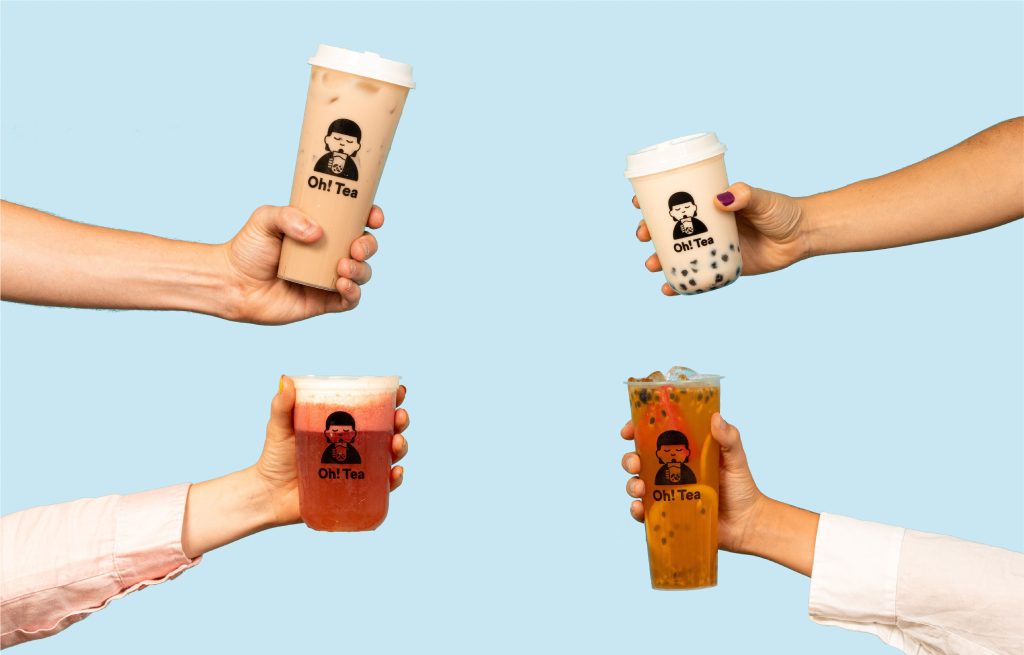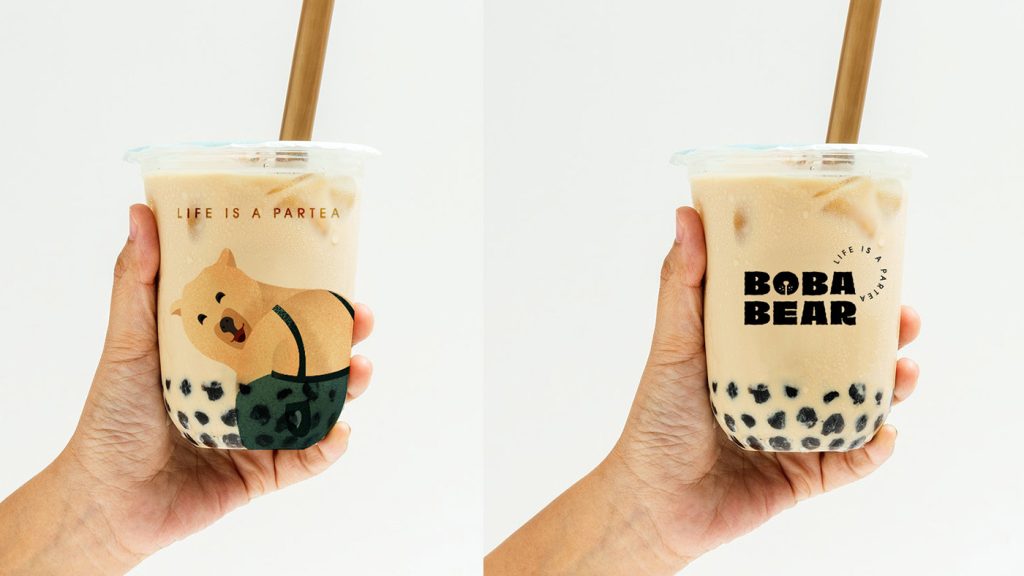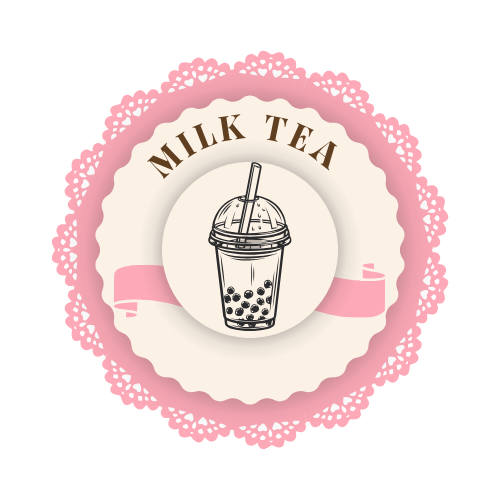Blog
The Evolution of Bubble Tea Packaging and Branding
Bubble tea, also known as boba tea, has transformed from a niche beverage in Taiwan to a global phenomenon. Alongside its rise in popularity, bubble tea packaging and branding have evolved significantly, driven by consumer demands, environmental concerns, and a highly competitive market. Modern bubble tea brands invest heavily in innovative packaging designs and unique branding strategies to stand out in a crowded space, creating memorable experiences for their customers.
This article explores the evolution of bubble tea packaging and branding, highlighting how it has shaped the industry and contributed to the drink’s global appeal.
1. Early Bubble Tea Packaging: Practical and Minimal
When bubble tea first emerged in Taiwan in the 1980s, the focus of packaging was primarily on functionality rather than aesthetics. Early bubble tea vendors used simple, transparent plastic cups sealed with a plastic lid or cling film. These containers allowed customers to see the layers of tea, milk, and tapioca pearls, enhancing the drink’s appeal. The goal was practicality—bubble tea was designed as a grab-and-go beverage for busy city dwellers.

Key Features:
- Clear plastic cups for visibility.
- Plastic straws wide enough to accommodate tapioca pearls.
- Minimal or no branding, as bubble tea was primarily sold at local street stalls.
At this stage, packaging was not a key part of the marketing strategy but rather a practical solution to meet the needs of customers.
2. Rise of Branded Packaging
As bubble tea gained popularity in the late 1990s and early 2000s, businesses began to focus on branding to differentiate themselves from competitors. The use of branded packaging became a powerful marketing tool, helping to establish brand identity and attract loyal customers.
Key Changes:
- Logos and designs: Vendors started printing their logos, slogans, and branding elements on cups and lids.
- Customized straws: Straws became an extension of the brand, often featuring unique colors or patterns to match the brand’s identity.
- Uniformity: Packaging became more consistent across stores, helping to build brand recognition.
This shift marked the beginning of bubble tea chains, such as Chatime and Gong Cha, which used branding to set themselves apart in an increasingly competitive market.
3. Innovative Packaging for Instagram Appeal
The 2010s ushered in the era of social media, transforming how consumers interacted with food and beverages. Bubble tea brands began prioritizing Instagram-worthy packaging to appeal to younger, digitally-savvy audiences. Eye-catching designs and creative packaging became central to attracting customers and encouraging them to share their bubble tea experiences online.
Key Trends:
- Transparent cups with unique shapes: Brands introduced heart-shaped or bottle-like cups that stood out in photos.
- Layered presentation: Packaging emphasized the drink’s visual appeal, showcasing colorful syrups, gradients, and toppings.
- Customizable designs: Some brands allowed customers to choose their cup designs, adding a personal touch to the experience.
Examples:
- Tiger stripes in brown sugar bubble tea became a visual trend, with clear cups showcasing the caramelized syrup swirls.
- Brands like The Alley and Koi Thé used minimalistic, high-end branding to emphasize sophistication.
4. Eco-Friendly Packaging: Addressing Environmental Concerns
As the bubble tea industry expanded globally, the environmental impact of its packaging became a significant concern. The widespread use of single-use plastic cups, lids, and straws sparked backlash from environmentally-conscious consumers, leading many brands to adopt more sustainable packaging options.
Eco-Friendly Innovations:
- Biodegradable cups and straws: Many bubble tea brands transitioned to biodegradable or compostable materials for cups and lids.
- Reusable tumblers: Brands like Starbucks-inspired reusable cups, encouraging customers to bring their own containers for discounts.
- Paper straws: While controversial due to their tendency to soften quickly, paper straws became a common alternative to plastic.
Brands such as Boba Guys and HeyTea positioned themselves as eco-conscious leaders, using environmentally friendly packaging as part of their branding strategy.
5. Personalization and Interactive Branding
With the rise of customization in the food and beverage industry, bubble tea brands began incorporating personalization into their packaging. This approach not only enhanced the customer experience but also fostered stronger connections between brands and their audience.
Key Features:
- Customizable cups: Some brands offered cups where customers could write their names or doodle.
- Interactive elements: QR codes on cups linked to exclusive promotions, games, or stories about the brand.
- Seasonal packaging: Brands like Coco and Gong Cha introduced limited-edition designs for holidays or special events, creating collectability.
6. Luxury and Premium Branding
As bubble tea grew in popularity, some brands positioned themselves as luxury options, using premium packaging to convey quality and exclusivity. This trend catered to consumers willing to pay a premium for unique flavors and upscale presentation.

Features of Luxury Packaging:
- High-quality materials: Brands like HEYTEA use sturdy cups with elegant finishes, such as frosted designs or gold accents.
- Minimalistic aesthetics: Sophisticated, clean designs appealed to customers seeking a high-end experience.
- Glass bottles: Some premium brands replaced plastic with reusable glass bottles to elevate the drink’s presentation.
7. Global Adaptations and Local Influences
As bubble tea spread to countries across the globe, packaging and branding adapted to local cultures and preferences. This created a fusion of global trends and regional influences, making bubble tea even more appealing to diverse audiences.
Examples:
- In Japan, bubble tea packaging incorporates minimalist aesthetics and high-quality materials, reflecting local design preferences.
- In Southeast Asia, colorful, vibrant packaging reflects the tropical climate and love for bold flavors.
- In Western markets, bubble tea branding often emphasizes health-conscious messaging, incorporating buzzwords like “organic,” “natural,” or “plant-based.”
8. Technology-Driven Innovations
Recent advancements in technology have introduced a new wave of smart packaging and branding in the bubble tea industry.
Technological Features:
- QR Codes: Customers can scan QR codes on packaging to access menus, loyalty programs, or brand stories.
- Augmented Reality (AR): Some brands use AR to create interactive experiences, such as animated characters that appear when scanning the cup with a smartphone.
- Contactless Seals: In response to the COVID-19 pandemic, bubble tea shops introduced tamper-proof packaging and contactless seals to reassure customers of safety and hygiene.
9. The Role of Sustainability in Branding
Today, sustainability is more than just a trend—it’s an essential component of branding for bubble tea companies. Brands are aligning their values with environmental consciousness, using eco-friendly packaging to appeal to younger, environmentally-aware customers.
Successful Examples:
- Boba Guys: Known for using compostable packaging and promoting sustainable practices in their operations.
- HeyTea: Combines luxury branding with sustainable materials, showing that style and eco-consciousness can coexist.
Conclusion: The Power of Packaging and Branding in Bubble Tea
The evolution of bubble tea packaging and branding reflects the drink’s journey from a local Taiwanese favorite to a global cultural phenomenon. As consumer preferences continue to shift, bubble tea brands are innovating in design, sustainability, and customer engagement to stay relevant and appealing. Whether it’s through Instagram-worthy visuals, eco-friendly initiatives, or personalized experiences, bubble tea packaging and branding have become powerful tools for creating a memorable and irresistible product.
From its humble beginnings to its current status as a global sensation, bubble tea’s packaging and branding are a testament to the drink’s ability to adapt, innovate, and delight customers around the world.


